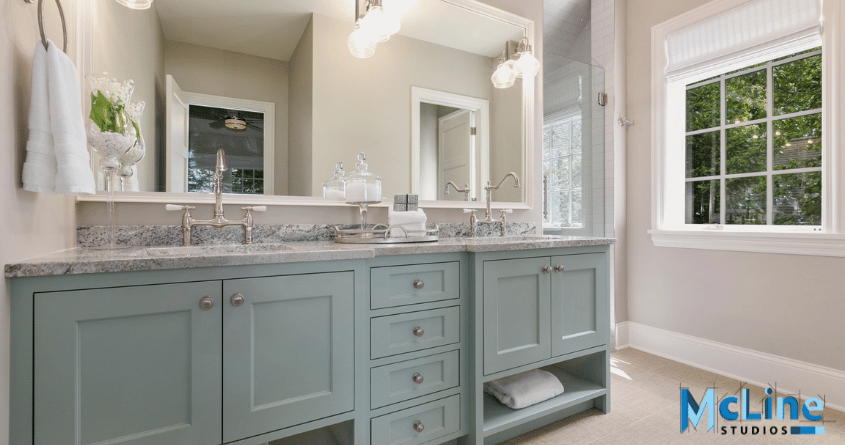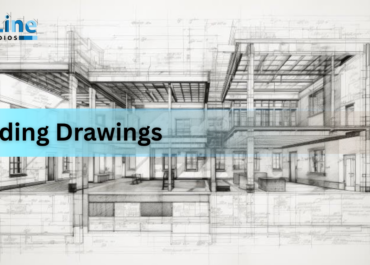Cabinet shop drawings are essential in the woodworking and cabinetry industry. Cabinet shop drawings serve as detailed blueprints that guide the fabrication and installation process.
The main purpose of cabinet shop drawings is to provide detailed and precise blueprints that guide the fabrication and installation of cabinetry.
These drawings ensure that all specifications, dimensions, materials, and construction methods are communicated among architects, designers, fabricators, and installers.
What Should Be In Cabinet Shop Drawings?
Cabinet shop drawings act as a bridge between the design phase and the actual construction. Here are the fundamental elements of cabinet shop drawings:

Final Layouts
The final layouts include floor plans and elevation views. These drawings should show the placement of all cabinets in the room relative to walls, doors, windows, and other architectural features.
Elevation views should provide vertical perspectives of each wall, indicating the heights and configurations of cabinets.
Detailed Views
It must include sectional views and detailed drawings of elevations. Section views should have cross-sectional diagrams showing the internal structure and composition of cabinets, including construction details.
Whereas, detailed drawings of elevations include more specific information like cabinet heights, widths, and depth dimensions.
Dimensions
Dimensions of the drawings should be mentioned. The total width, height, and depth of each cabinet and cabinet assembly should be present.
Also, include detailed measurements of all individual components, such as shelves, doors, drawers, and hardware placement. Remember to leave space for doors to open, drawer slides, and installation tolerances.
Construction Details
The drawing document should mention the details about the joinery techniques like methods for joining pieces together, such as dovetail, mortise, and tenon, or dowel joints. The details like types of screws, nails, glue, or other fastening methods must be included.
Specifications for hinges, drawer slides, handles, knobs, and other hardware components can also be included in the drawings.
Assembly Instructions
There should be a diagram showing how different parts fit together. Step-by-step instructions for the assembly of the cabinets can be helpful. It may highlight the critical steps and potential challenges.
Installation Details
These drawings should include the guidelines for installing cabinets on walls or floors, including anchoring and leveling. It should also represent how cabinets interfere with countertop installation backsplashes, appliances, and other fixtures.
Material And Finishes
Lastly, information about the materials like types of wood, plywood, veneers, or other materials to be used for different cabinet parts. It should also include types of finishes, stains, paints, and their application methods.
Effective Tips To Create Cabinet Shop Drawings
The creation of cabinet shop drawings is important to ensure accurate fabrication and installation. Here are a few tips:
- Detailed Measurements: Always begin with precise measurements of the space. Include all relevant dimensions, such as wall lengths, ceiling heights, and any obstructions like pipes or electrical outlets. Please make sure that all measurements are double-checked.
- Clear Layouts: Develop clear and comprehensive layout drawings. Use plans, elevations, and sections to illustrate the design from different perspectives. This helps in visualizing the space and identifying potential issues early.
- Accurate Scale: Always draw to scale. Common scales for cabinet drawings include 1/4″ = 1′-0″ or 1/2″ = 1′-0″. Try to use a consistent scale throughout your drawings to maintain clarity.
- Detailed Sections and Elevations: Provide detailed section and elevation views of each cabinet. Indicate all dimensions, including the heights of shelves, drawers, and the overall cabinet. Label all parts clearly.
- Material Specifications: Please specify all materials, finishes, and hardware. Include details about the type of wood, laminate, or other materials, as well as the finish (e.g., stain or paint).
- Joinery and Construction Details: Clearly illustrate joinery methods and construction details. Show how different parts of the cabinet will be assembled, including the type of joints, fasteners, and adhesives to be used.
Are Cabinet Shop Drawings And Millwork Shop Drawings The Same?
Cabinet shop drawings and millwork shop drawings are closely related but not entirely the same. While they both involve detailed plans and specifications for woodworking projects, there are some distinctions between the two.

Scope and Purpose
- Cabinet Shop Drawings: These focus specifically on cabinets, such as those found in kitchens, bathrooms, or storage spaces. They provide detailed plans for the construction and installation of cabinets, including dimensions, materials, hardware, and finishes.
- Millwork Shop Drawings: Millwork encompasses a broader range of custom architectural woodwork, including items like doors, windows, trim, paneling, and built-in furniture. Millwork shop drawings cover a wider scope of woodworking elements beyond just cabinets.
Complexity
- Cabinet shop drawings: They tend to be more straightforward and focused since they deal with a single type of product: cabinets. The designs are typically standardized to some extent based on common cabinet dimensions and configurations.
- Millwork shop drawings: These drawings can be more complex due to the variety of elements involved. They may include intricate details for custom-designed pieces tailored to fit specific architectural spaces and design requirements.
Integration with Architectural Plans
Both types of drawings need to integrate seamlessly with architectural plans and specifications. However, millwork shop drawings often require closer coordination with architectural drawings since they involve elements that are more closely integrated with the overall building design, such as trim, moldings, and built-in furniture.
The Final Note
In summary, cabinet shop drawings provide detailed blueprints that guide the fabrication and installation of cabinets.
These drawings include final layouts, detailed views, dimensions, construction details, assembly and installation instructions, material and finish specifications, and effective tips for creating them.
While similar to millwork shop drawings, which cover a broader range of architectural woodwork, cabinet shop drawings focus specifically on cabinets and tend to be more straightforward in design.




